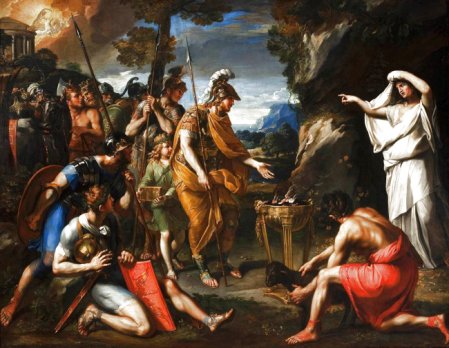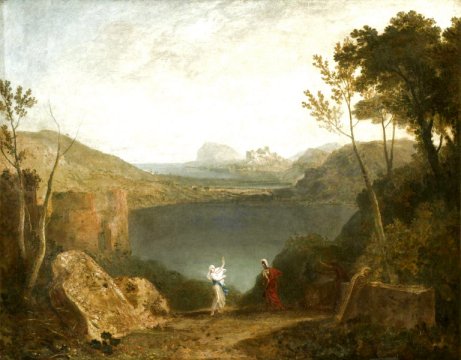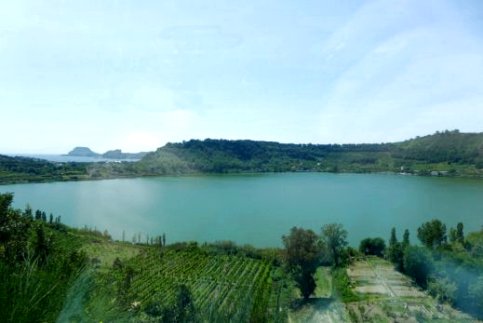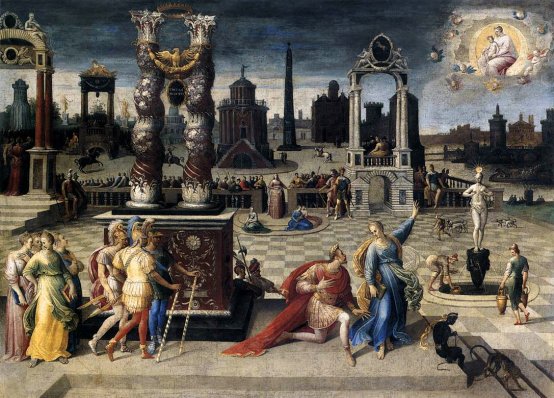“And when, thither borne, thou drawest near to the town of Cumae, the haunted lakes, and Avernus with its rustling woods, thou shalt look on an inspired prophetess, who deep in a rocky cave sings the Fates and entrusts to leaves signs and symbols.”
Aeneid book 3.
The consultation with the sibyl is shown in the painting below by François Perrier , c 1646.

Aeneas has a particular request. He needs to visit the underworld to seek advice from his deceased father, Anchises. Conveniently, the entrance to the underworld is nearby, at lake Avernus. The painting below is said to be one of Turner's earliest works; it shows Aeneas and the sybil at the lake. The photograph of the lake is from our visit.


The Sibyl made it clear that going to the Underworld was not difficult; understandably, returning was far more of a problem!
Trojan, Anchises' son,
the descent of Avernus is easy.
All night long, all day, the doors of Hades stand open.
But to retrace the path, to come up to the sweet air of heaven,
That is labour indeed.
Aeneid 6.126-129.
For many early Christian theologians, the writings of the sybils were divinely inspired prophecies of the coming of Jesus, as indeed were found in the Old Testament. Saint Augustine certainly thought so: in chapter 23 of 'The City of God' he writes of
'the Erythræan
Sibyl, Who is Known to Have Sung Many Things About Christ More Plainly
Than the Other Sibyls.
Highly regarded too are the
Eclogues of Virgil: Eclogue IV was often interpreted as a prophecy by
the Cumaean sibyl of the coming of Christ:
'Now is come the last age of Cumaean song; the great line of the
centuries begins anew. Now the Virgin returns, the reign of Saturn
returns; now a new generation descends from heaven on high. Only do you,
pure Lucina, smile on the birth of the child, under whom the iron brood
shall at last cease and a golden race spring up throughout the world!
Your own Apollo now is king!'
And in art? The painting below by Antoine Caron c1575, shows the emperor
Augustine on his knees, consulting a sibyl. It is usually considered to
be the Tiburtine sibyl, though others suggest it may be the Cumaean. He
asks the sibyl whether he should be worshipped as a god. The sibyl
points to a vision in the sky of the Virgin and the Christ Child: this
is the day that Christ was born. A voice from the sky tells Augustus
that 'This is the Virgin who shall conceive the Saviour of the World'.
An unlikely legend, to be sure, but one that became popular in medieval
and later art.
